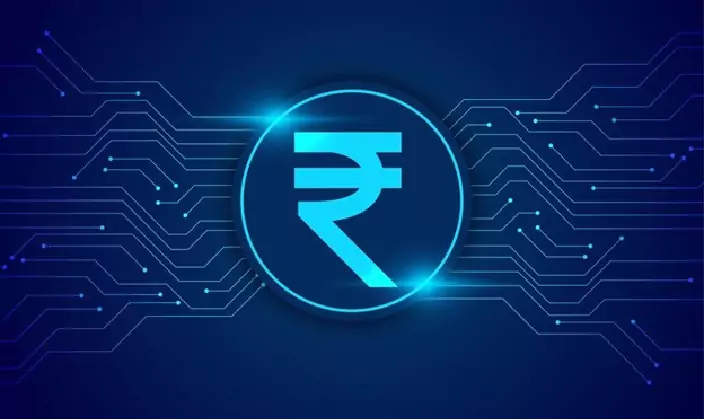Digital Rupee – The Future of India's Central Bank Digital Currency (CBDC)
1.Introduction
The Digital Rupee (e₹) is India's Central Bank Digital Currency (CBDC), introduced by the Reserve Bank of India (RBI) in December 2022. It represents a digital transformation of India’s financial system, aiming to modernize transactions, improve financial inclusion, and enhance monetary policy control. Unlike cryptocurrencies, which are decentralized and unregulated, the Digital Rupee is a sovereign-backed legal tender, ensuring security and stability.
With the increasing digitalization of payments, India’s transition towards a cashless economy has accelerated. The Digital Rupee is expected to reshape India's payment ecosystem, reducing dependence on cash and promoting efficiency, transparency, and financial security.
This note comprehensively explores the concept, need, benefits, challenges, implementation, and future scope of the Digital Rupee in India.
2.Understanding the Digital Rupee (e₹)
2.1 What is the Digital Rupee?
- The Digital Rupee (e₹) is an electronic version of
India's
currency, issued and regulated by the RBI.
- It is a legal tender, meaning it can be used for all
transactions similar to physical cash.
- Unlike cryptocurrency, which is decentralized, the Digital
Rupee is
centrally controlled by the government and does not involve
mining.
- Key features:
- Issued in the same denominations as physical cash (₹1,
₹2,
₹5, ₹10, ₹50, ₹100, ₹500, etc.).
- Stored in digital wallets provided by banks and financial
institutions.
- Supports both online and offline transactions.
- Does not earn interest, unlike traditional bank
deposits.
2.2 Types of Digital Rupee
- Issued in the same denominations as physical cash (₹1, ₹2, ₹5, ₹10, ₹50, ₹100, ₹500, etc.).
- Stored in digital wallets provided by banks and financial institutions.
- Supports both online and offline transactions.
- Does not earn interest, unlike traditional bank deposits.
India’s Digital Rupee is divided into two categories:
| Type | Purpose | Launched | Key Features |
|---|---|---|---|
| Retail (e₹-R) | For individuals and merchants | Dec 1, 2022 | Used for digital transactions like UPI payments |
| Wholesale (e₹-W) | For interbank and institutional transactions | Nov 1, 2022 | Used for government securities and large financial settlements |
2.3 Difference Between Digital Rupee and Cryptocurrency
| Feature | Digital Rupee (e₹) | Cryptocurrency (Bitcoin, Ethereum) |
|---|---|---|
| Issuer | RBI (Government-backed) | Private, Decentralized Network |
| Legal Status | Legal tender | Not recognized as legal tender |
| Stability | Stable | Highly volatile |
| Transaction Verification | Centrally controlled | Decentralized mining |
| Security | High, government-backed | Prone to cyber threats and hacking |
| Interest | No interest on holdings | Some cryptocurrencies allow staking rewards |

3. Need for the Digital Rupee
3.1 Growth of Digital Transactions in India
- India has witnessed exponential growth in digital transactions, driven by UPI (Unified Payments Interface), internet banking, and mobile wallets.
- As per RBI reports (Feb 2024):
- Digital payments increased from 162 crore transactions (FY13) to 14,726 crore transactions (FY24).
- India accounts for 46% of global digital transactions, leading countries like China, the USA, and the UK.
- The Digital Rupee aims to enhance digital payments by providing a stable and government-backed alternative.
3.2 Enhancing Financial Inclusion
- 4% of India’s population had formal financial access as of March 2022 (RBI Report).
- Challenges in rural areas:
- Poor banking infrastructure
- Limited internet access
- Low financial literacy
- How Digital Rupee Helps:
- Works without a bank account
- Can function offline, allowing transactions even in remote areas
- Helps in direct benefit transfers (DBT) and government schemes
3.3 Promoting a Cashless Economy
- Cost of printing, storing, and distributing cash:
- India spent ₹4,984 crore (US$ 596.67 million) in FY22 on cash management.
- The Digital Rupee reduces dependency on physical cash, making transactions faster and more cost-effective.
3.4 Reducing Financial Crimes & Enhancing Transparency
- Blockchain technology ensures secure, tamper-proof transactions.
- Reduces black money, money laundering, and tax evasion.
- Enables efficient tracking of government subsidies and direct payments.
3.5 Strengthening RBI’s Monetary Policy
- The RBI can control liquidity better by issuing or withdrawing Digital Rupees.
- Helps in inflation control and money supply regulation.
4. Implementation of the Digital Rupee
4.1 Digital Rupee Pilot Program (2022-24)
- Retail Digital Rupee (e₹-R) Pilot:
- Launched on December 1, 2022, for individuals and merchants.
- Initial banks involved: SBI, ICICI, Yes Bank, IDFC First Bank.
- Expanded to: HDFC, Kotak Mahindra, Union Bank, and Bank of Baroda.
- Wholesale Digital Rupee (e₹-W) Pilot:
- Launched on November 1, 2022, for interbank settlements.
- Used for government securities transactions.
4.2 How the Digital Rupee Works
- Users can store Digital Rupees in wallets provided by banks.
- Transactions can be Person-to-Person (P2P) or Person-to-Merchant (P2M).
- Can be converted to physical cash or bank deposits anytime.
5. Impact of the Digital Rupee
5.1 Economic Impact
- Boosts financial inclusion
- Reduces reliance on cash and improves payment efficiency
- Encourages foreign investment and fintech innovations
5.2 Impact on Businesses
- Lower transaction costs due to the removal of intermediaries
- Faster real-time transactions
- Access to global digital payment networks
5.3 Impact on Individuals
- Safer and faster transactions
- Less dependency on cash
- Protection against fraud and counterfeit currency
6. Challenges in Implementing the Digital Rupee
6.1 Technological Barriers
- Requires strong internet and mobile penetration
- Offline functionality still under development
6.2 Cybersecurity Risks
- Potential hacking threats and cyber fraud
- Requires advanced encryption and security frameworks
6.3 Public Awareness & Trust
- Many citizens prefer cash over digital transactions
- Lack of digital literacy in rural areas
6.4 Impact on Banking System
- Banks may lose deposits as customers store Digital Rupees instead of savings
- May reduce loan availability if banking deposits decline
7. Future of the Digital Rupee
7.1 Integration with UPI & Fintech
- RBI plans to merge Digital Rupee with UPI platforms like Google Pay, PhonePe, and Paytm.
- Aim: Seamless digital adoption across India.
7.2 Cross-Border Transactions & International Trade
- Can reduce remittance costs for NRIs.
- Can be used for global trade settlements.
7.3 Expansion into Blockchain-Based Smart Contracts
- Future updates may allow automatic transactions using smart contracts.













